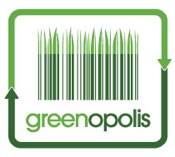Radio Tag Trash Bins
Technology: Pay As You Throw in Belgium
The town of Ghent, Belgium has a data-intensive system for waste collection whereby all roll carts are outfitted with radio tags (RFID tags) that track each and every pound of waste. Does this system “work”? Depends on what you measure.
The information in this blog post combines data gleaned from a Lisis report in May 2006 and a personal visit by the blogger, Meredith Sorensen, to Ghent, Belgium in 2008.
In 1998, Ghent introduced a system that created a direct link between the amount of waste generated by a household and the money they had to pay for its disposal. In rural areas, households get one bin for residual waste, and one bin for meat-excluded organic waste (kitchen and garden waste).
Each bin is mounted with an “IntelliGhent” chip (or RFID tag) that registers each individual emptying of the bin. A device mounted on the loading system of the truck automatically reads the chip. Data (customer name, address, type and size of container) are registered in the chip and fed to the on-board computer in the truck. At the end of he day, bills are sent out automatically.
For recycling, residents buy a transparent blue PMD waste sack for their plastic, metal, and drink cartons.
With this system, Ghent saw a decrease in waste collected from households. In 1995, they collected 325kg of waste per resident door-to-door. Four years later, in 1999, the city collected 189kg per resident.
The residual waste, the purple at the bottom of this bar graph, steadily trends downward from 1995 to 1999. The actual waste (the total volume of the bars) stayed pretty much the same; Ghent residents just achieved greater segregation of the disposed materials, as you can see in the expanding rainbow of colors.
How did they, the residents of Ghent, get such a high segregation?Their container parks. Ghent residents, hip to the exact amounts of residual waste generated (and charged) in their household, started visiting their collection center. The collection park I visited in 2008 was staffed by friendly, knowledgeable people dressed in neon.
The bins were clearly labeled and the materials I saw had a very high level of segregation and minimal contamination.
(Side note: the Belgium people I know are wonderfully optimistic. My friend’s father, Jan (photo below), brought me to Ghent’s collection center. As it started to hail on us, he said, “The best part of hail is that you don’t get wet.” As if there are so many redeeming properties of hail.)
Getting back to trash.
As you can see from this graph, Ghent residents started visiting their container park more often the year the city started charging per tip at the household.
This graph gets us back to the original question: Did it work?
If you are measuring waste disposed of from each household, then yes! That number went down. However, if you are measuring the net amount of greenhouse gasses, then it is debatable; how does the increased use of personal vehicles visiting the collection center balance out compared to the efficiencies gained in quicker truck routes?
In sum, the two questions to keep in mind when evaluating any project are:
-
What are you measuring?
-
How are you measuring it?
Greenopolis.com is dedicated to our users. We focus our attention on changing the world through recycling, waste-to-energy and conservation. We reward our users for their sustainable behaviors on our website, through our Greenopolis Tracking Stations and with curbside recycling programs.
GREENOP3438

